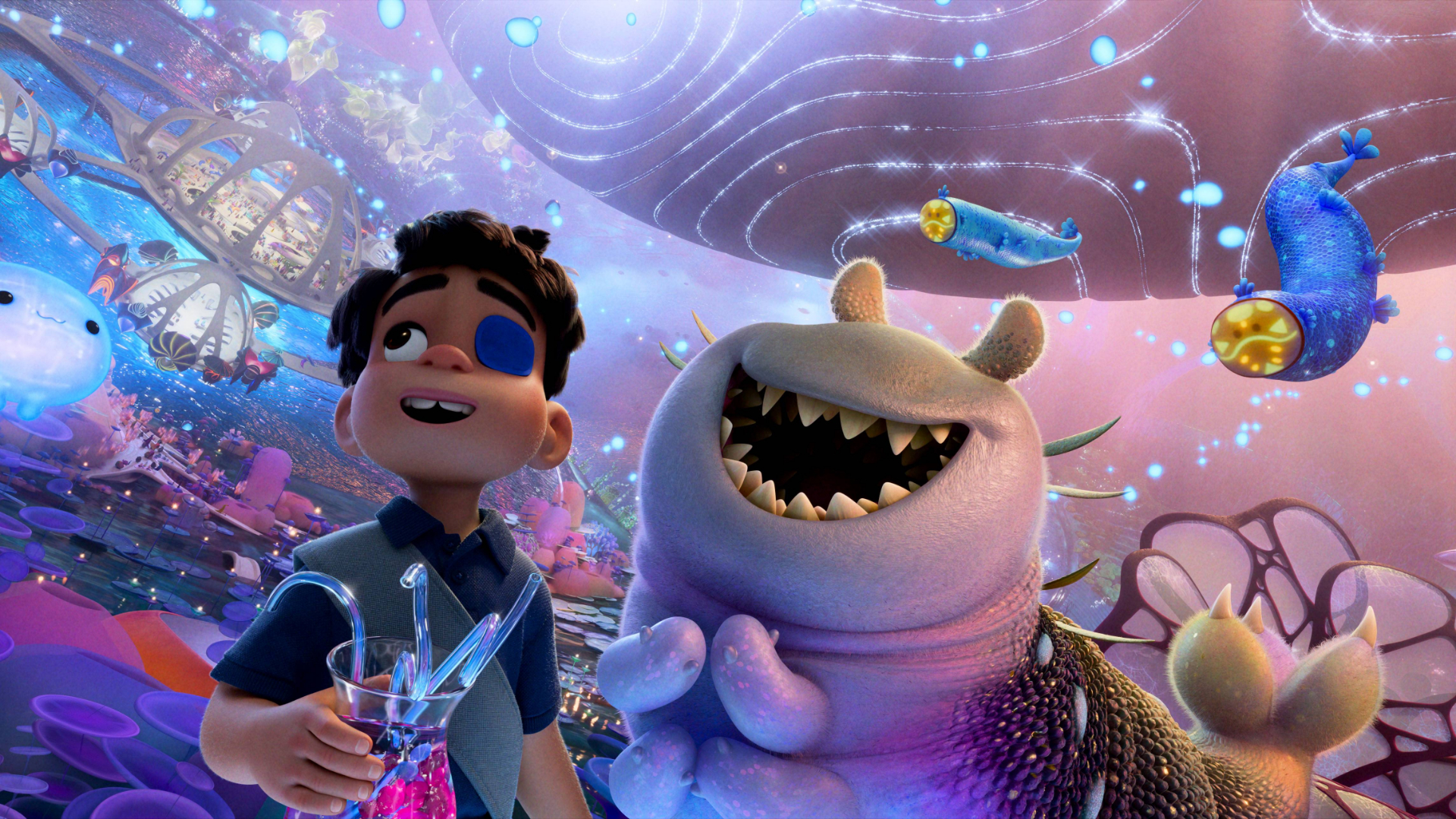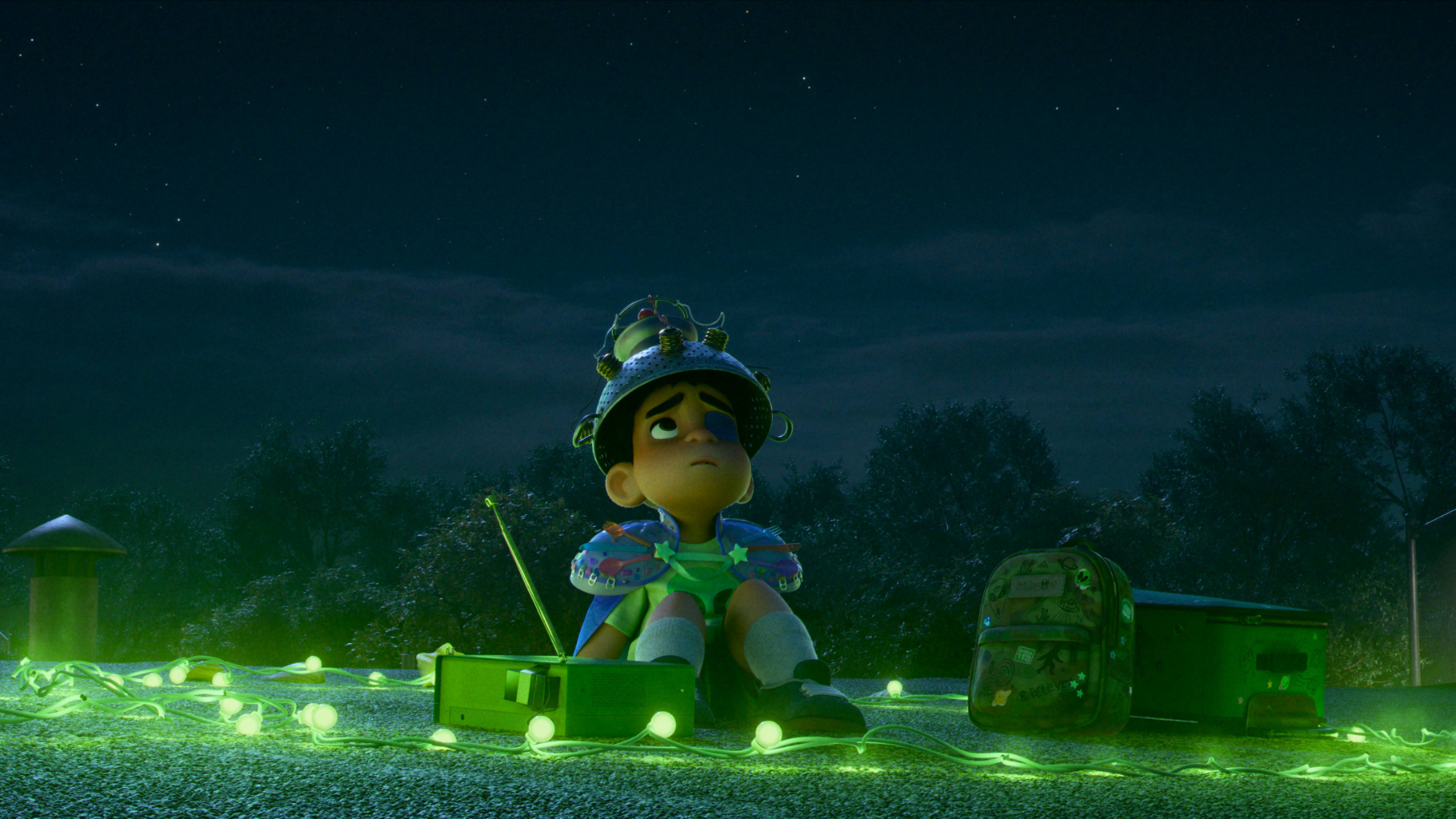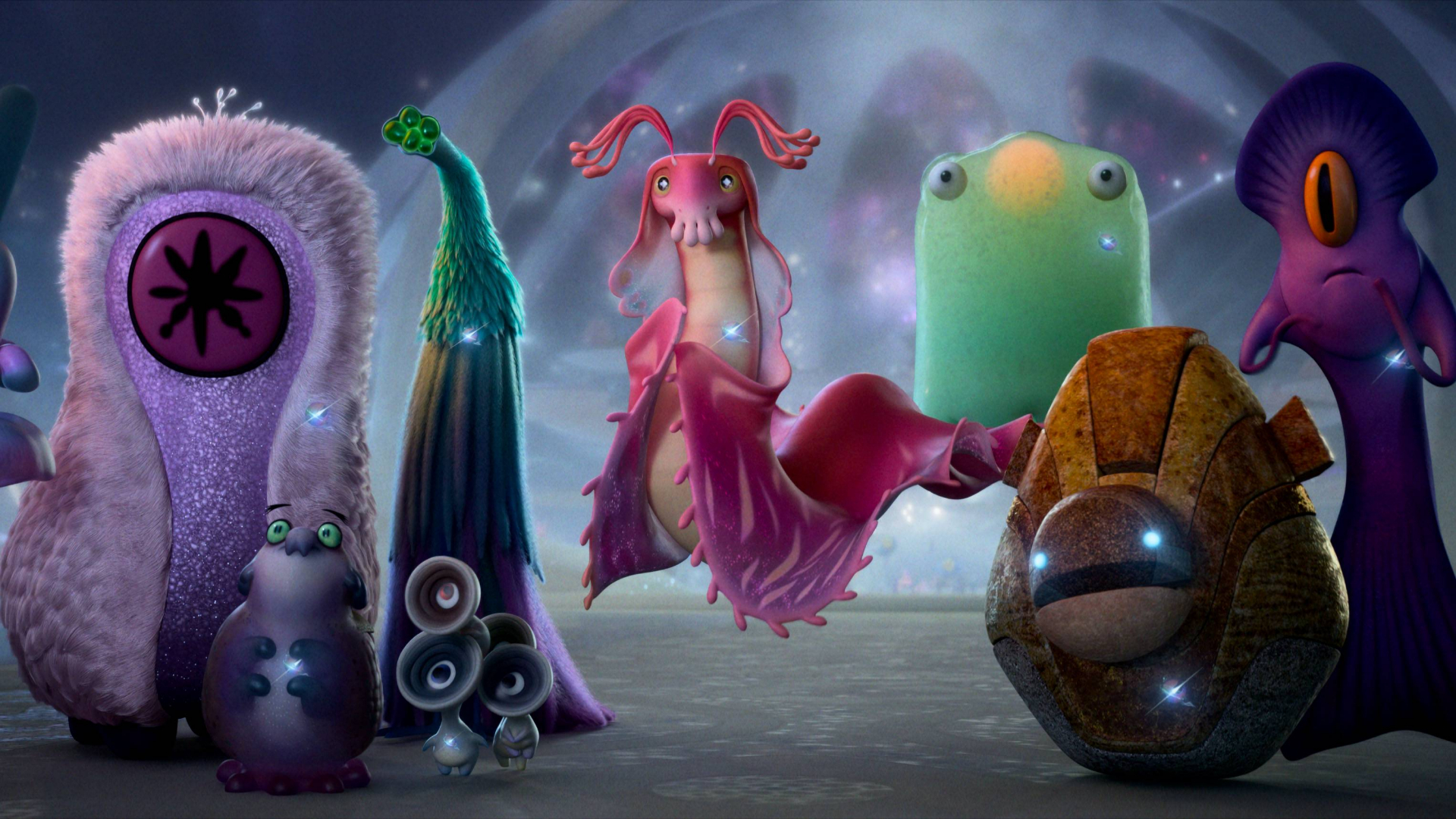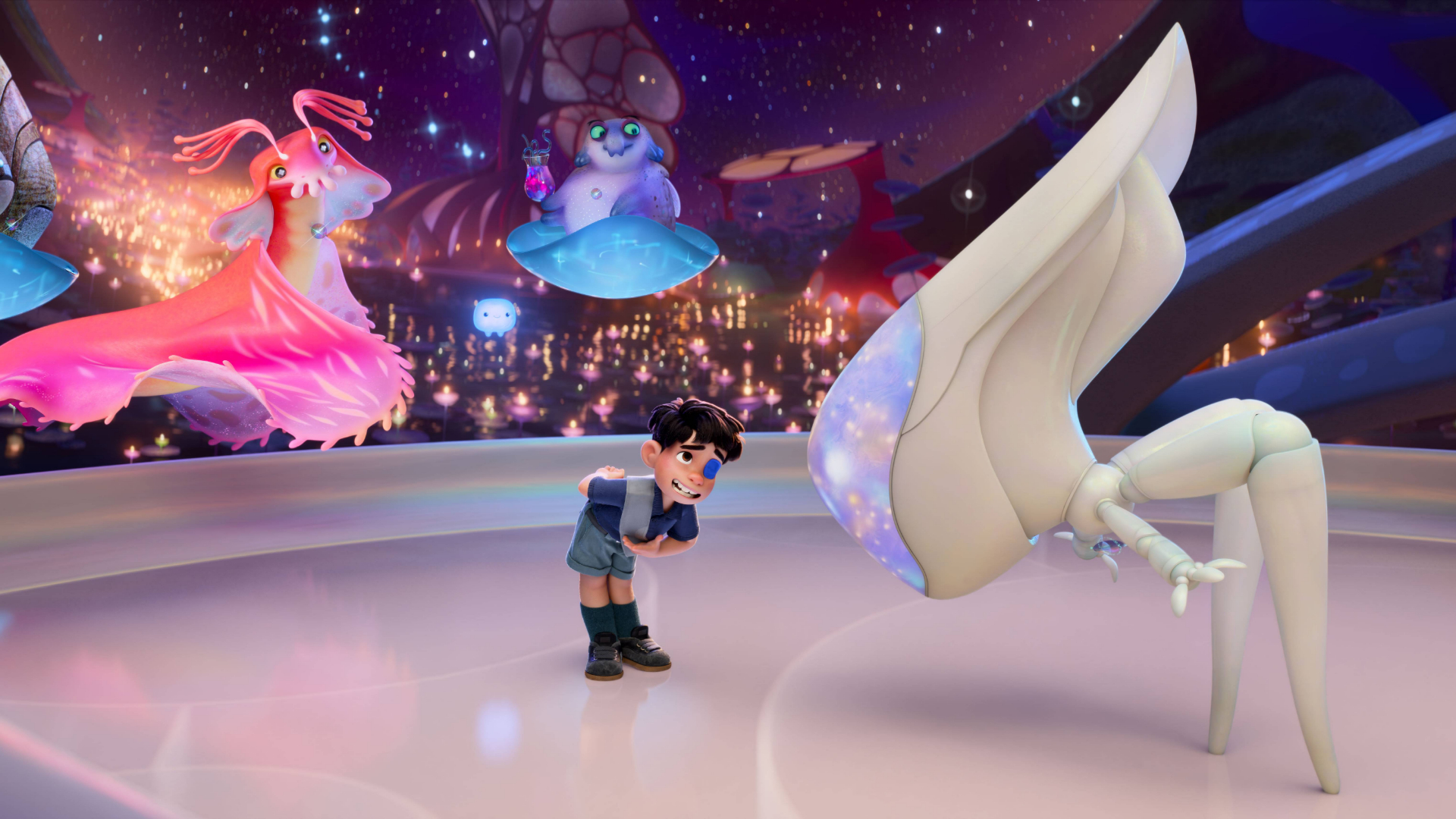'Nerds are cool' — Pixar's 'Elio' is a powerful story of finding yourself amongst the stars (interview)
We spoke to "Elio" stars Zoe Saldaña, Yonas Kibreab, and Brad Garrett, alongside co-directors Domee Shi and Madeline Sharafian, about finding the heart and humanity in sci-fi stories.

A lonely kid, an alien council, and the deep-space detour that began with Voyager's unexpected abduction.
Pixar's latest feature, "Elio," marks only the studio's third official foray into science fiction, following "WALL·E" in 2008 and the divisive "Lightyear" in 2022. Helmed by co-directors Domee Shi ("Turning Red") and first-timer Madeline Sharafian, along with longtime Pixar producer Mary Alice Drumm, the film delivers a vibrant, heartfelt tale of identity, imagination, and intergalactic diplomacy that manages to feel intimate despite its cosmic scale.
At its core, "Elio" follows a dreamy, socially awkward boy who inadvertently becomes Earth's ambassador to a coalition of alien civilizations. As he tries to navigate a first-contact situation he's entirely unprepared for, young Elio Solís also embarks on a quieter, more personal journey to understand who he is on his own terms. According to the official synopsis, it's a "cosmic misadventure" that invites laughter, reflection, and a healthy appreciation of the orbital space junk crisis Earth now faces.

"We probably won't stop telling stories about those lonely little heroes until we don't have to worry about that anymore."
Zoe Saldaña
That misadventure begins with a surprisingly irreverent twist on real science. In the film's opening moments, the deep-space probe Voyager 1, launched by NASA in 1977 and currently the farthest human-made object from Earth, is quietly snatched from the void by an alien tractor beam. This bold act of celestial piracy sets the stage for the movie's central premise; the aliens discover the golden record aboard Voyager and mistakenly assume the "representative of Earth" is the first human they encounter, Elio.
While the plot isn't particularly complex, the storytelling remains engaging, propelled by tight pacing, expressive animation, and an ensemble cast that brings unexpected warmth to even the most outlandish alien encounters. Yonas Kibreab, a rising 14-year-old actor of Filipino and African American heritage, voices Elio with understated charm, while sci-fi veteran Zoe Saldaña plays his no-nonsense aunt, Olga Solís.
"For me as a mom of three boys who are very much like Elio, trying to find their voice and where they belong, I connected to it right away," Saldaña told Space.com. "We probably won't stop telling stories about those lonely little heroes until we don't have to worry about that anymore."

Saldaña's co-star Kibreab, who recently appeared in "Obi-Wan Kenobi", added that he embraces his own inner nerd, saying, "Nerds are cool. Never put your passions aside just to fit in."
Breaking space news, the latest updates on rocket launches, skywatching events and more!
The film's visual ambition matches its emotional arc, with what might be Pixar's most effective use of 3D to date. From the moment Voyager 1 appears on screen, floating in silence, then drifting seemingly out of the theater screen toward the audience, the stereo work adds depth and immersion without ever becoming a gimmick.
"We told our stereo team we wanted it at an 11," Sharafian said. "We love 3D, and sci-fi just works so well with it. Every time we watched a review, we were audibly excited."
Those early shots of Voyager moving through the void are more than eye candy. For the filmmakers, they carried emotional weight, reinforcing the theme of loneliness and scale. "When we saw it in 3D, it just cranked it up to the next level," Shi added. "It made Elio feel even smaller and more isolated, like this little saddle floating through the vastness."

"Space is aspirational there, it's healing. And for Elio, too, it's a place to escape, to process pain and to find himself."
Domee Shi
That feeling of awe is rooted in real-world science. Launched in 1977, both Voyager 1 and Voyager 2 were designed to take advantage of a rare planetary alignment to conduct flybys of the outer planets. Voyager 1 visited Jupiter and Saturn, while Voyager 2 also flew past Uranus and Neptune. After completing their primary missions, both were redirected to explore the outer reaches of the Solar System. In 2012, Voyager 1 became the first human-made object to enter interstellar space, followed by Voyager 2 in 2018.
As of May 2024, Voyager 1 is over 24 billion kilometers from Earth and still transmitting data. Both spacecraft carry a 12-inch golden phonograph record containing images and sounds of Earth curated by a team led by Carl Sagan, which was intended as a time capsule for any alien civilization that might someday intercept it. In Elio, the record's hopeful contents are what draw the attention of the Galactic Council and trigger the unfolding of the story.
That sense of space, both literal and emotional, is central to the film's environmental and psychological subtext. One of the more inventive set pieces involves Elio and an alien companion navigating a minefield of orbital debris, a sequence inspired by a real-time website that maps space junk around Earth.

"Our writer Mike Jones found it," Sharafian said. "It was horrifying. Every object has a name and a speed and it's just surrounding the planet. But it sparked this idea of a sequence where Elio has to work with someone else to get through it and Earth has to come together to help."
For all its imaginative flair, Elio remains grounded in recognizable genre DNA. Attentive viewers will spot nods to "Contact," "Flight of the Navigator," "Galaxy Quest," "Gravity" and even "Terminator 2." The filmmakers cite a range of inspirations from classic blockbusters, but they approached these references as affectionate tributes rather than scaffolding. And there is a significant difference.
"We watched everything we could," Shi said. "We wanted to understand what makes sci-fi so fun and meaningful. A lot of what we loved was the charm, the imagination, the heart."
Brad Garrett, probably most well-known for "Everyone Loves Raymond," voices the film's primary antagonist, Lord Grigon, and agrees that the film balances genre conventions with originality. "I rarely get to play a villain in animation," said Garrett, a veteran of five Pixar films. "They showed me the drawings and I said, 'Wow, when can I start?'"

Garrett recorded his part solo in a sound booth, as is typical for feature animation, and he says that he built Grigon's voice in part by studying the character's exaggerated underbite. Not a sci-fi fan himself, Garrett said the genre makes him uneasy. "I still believe at 65 there's something under the bed," he admitted. "But I've always loved villains. Even though I'm probably more Elio than anyone."
While the cast and crew bring their own perspectives to the story, Elio ultimately lands as a deeply personal film about otherness, imagination, and the desire to connect. There are laughs, certainly, and plenty of visual spectacle, but the real surprise is how gently the film treats its young protagonist's emotional life, allowing moments of silence and softness to shine amid the cosmic chaos.
"I really love 'Contact,'" said Shi, reflecting on the film's emotional DNA. "Space is aspirational there, it's healing. And for Elio, too, it's a place to escape, to process pain and to find himself."
That message may resonate even more as humanity continues to gaze outward, waiting for signs we are not alone. Asked how they imagine real-world first contact might unfold, Saldaña struck a note of optimism tinged with realism.
"There'll be confusion, not everyone will be accepting, but I'd love to be alive for that conversation when it hits the news," she said. "We've discovered life, we're reaching out, and we're communicating. I want to witness that."
Pixar's "Elio" is out now, exclusively in cinemas. While we don't have any official word yet, it's also safe to assume it will arrive on Disney+ later in the year.
Join our Space Forums to keep talking space on the latest missions, night sky and more! And if you have a news tip, correction or comment, let us know at: community@space.com.
When Scott's application to the NASA astronaut training program was turned down, he was naturally upset...as any 6-year-old boy would be. He chose instead to write as much as he possibly could about science, technology and space exploration. He graduated from The University of Coventry and received his training on Fleet Street in London. He still hopes to be the first journalist in space.
You must confirm your public display name before commenting
Please logout and then login again, you will then be prompted to enter your display name.
